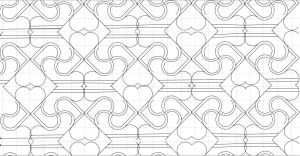After defining what math is to me, stating different problems that exist, and discussing gender issues I wanted to interview someone to see what it might confirm or deny for this particular person. I started out by asking questions that would give me an idea of what this female thought math was. Below is a narrative of the interview:
Me: Can you describe what mathematics is?
Her: Math is just problem solving using equations and numbers/
Me:Do you like or enjoy math?
Her: I am very good at math I just don’t like it.
Me: Could you tell me why you don’t like it?
Her: I don’t think it is useful in most situations. When am I ever going to use the quadratic equation in real life. I just had to memorize a bunch of equations that I’m going to forget at the end of the year anyways.
Me: So you say you are good at math, what make you say that?
Her: I get A’s in math.
Me: So you don’t really struggle?
Her: Nope
Me: Why do you think that is?
Her: My mom made me go to a learning center when I was little and memorize pointless facts that I used in my classes.
Me: Can you describe your worst mathematical experience(s)?
Her: In 3rd and 4th grade when we had to do the multiplication and division tables that were times. I could do them but not in a minute and it made me feel stupid.
Me: Can you describe your best mathematical experience(s)?
Her: (took a while to think) Nothing in particular. Maybe tanagrams, puzzles, anything that wasn’t just problems.
Me: How do you thin your math education could have been improved?
Her: If it was not based on memorization of equations and just using them in repeating practice problems with just different numbers.
Me: Do you think your enjoyment of mathematics has anything to do with being a female?
Her: NO
Me: Were most of your math teachers male or female?
Her: Mostly male.
After the interview I had a good grasp on her impression of what math is. I can take this interview into consideration for my classroom. Maybe not really force students to memorize equations all the time. Only emphasize the important ones that they should be using so often that it won’t really be memorization. I think that too many teachers reference the textbook as a guide for their curriculum. And this is great, but the textbooks emphasize everything equally. Teachers need to do a better job of transferring the importance of each concept to the students. Also, bringing meaning and purpose to everything they do! Looking forward to inspiring the world of those willing to absorb it.

